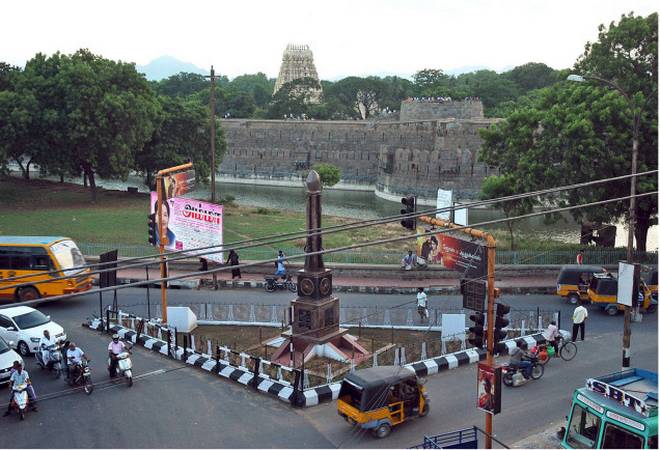Vellore To Madurai Taxi Rental Options
Pick our outstation call taxi administration, drop Taxi from Vellore to Madurai. You can book our one way drop Taxi administration it is possible that single direction drop or round excursions. get in touch with us for more subtleties on any Taxi service administrations required.
At Droptaxi24x7, you will get various of various kinds of Taxi writes to choose for ride a Vellore to Madurai Taxi Service. A part of the popular vehicles models fuse Indica, Etios, Innova, quick want and various other indulgence outstation Taxi. vellore to Madurai Car Rental bundles are planned in such a manner, so customer could benefit more points of interest by basically paying one route drop off charges. So for what motivation to hold up additional, get a move on, you are just couple of step away to get this arrangement.
The table underneath highlights the diverse outstation call taxi show decisions open which you can choose for Vellore to Madurai one way drop Taxi booking

History of Vellore
Vellore has seen a plethora of dynasties stake claim over it such as the Cholas, Pandyas, Vijayanagar, Pallavas, Hoysalas, Chalukyas, Sambhurvarayars, Rashtrakutas, Carnatic dynasty, Mughals, Bijapur Sultans, Marathas, French and British. The history of Vellore dates back to the 9th century as depicted in Chola inscriptions in the Annamalaiyar Temple in Tiruvannamalai.
There are inscriptions found from before the 9th century pointing to the rule of the Pallava kings. The Chola Kings took the reins from 850 to 1280. After the Cholas, came the Rashtrakutas, the later Cholas, Reddys and Vijayanagar kings. During the 17th century, Vellore came under the dominion of the Nawab of Carnatic. The Palaiyakkarar or poligars opposed British rule but were subdued.
Vellore finds itself etched on the annals of the Indian freedom struggle in that the Sepoy Mutiny of 1806 which took place inside Vellore fort is held as the forerunner of the Revolt of 1857. After Indian independence in 1947, Vellore became a part of the erstwhile Madras state. Currently, Vellore is climbing the ladders of industrialisation while also developing into a medical and educational hub
Most popular places to visit at vellore
Vellore has seen a plethora of dynasties stake claim over it such as the Cholas, Pandyas, Vijayanagar, Pallavas, Hoysalas, Chalukyas, Sambhurvarayars, Rashtrakutas, Carnatic dynasty, Mughals, Bijapur Sultans, Marathas, French and British. The history of Vellore dates back to the 9th century as depicted in Chola inscriptions in the Annamalaiyar Temple in Tiruvannamalai.
There are inscriptions found from before the 9th century pointing to the rule of the Pallava kings. The Chola Kings took the reins from 850 to 1280. After the Cholas, came the Rashtrakutas, the later Cholas, Reddys and Vijayanagar kings. During the 17th century, Vellore came under the dominion of the Nawab of Carnatic. The Palaiyakkarar or poligars opposed British rule but were subdued.
Vellore finds itself etched on the annals of the Indian freedom struggle in that the Sepoy Mutiny of 1806 which took place inside Vellore fort is held as the forerunner of the Revolt of 1857. After Indian independence in 1947, Vellore became a part of the erstwhile Madras state. Currently, Vellore is climbing the ladders of industrialisation while also developing into a medical and educational hub
History of Madurai
Madurai was the seat of power of the Pandyan Empire. It was built by the Pandyan king Kulasekhara and was the capital city of the great Pandya kings of South India. It was later ruled by Cholas, Later Pandyas, Madurai Sultanate, Vijayanagara, Madurai Nayaks and finally British. Pandyas and Nayaks contributed enormously to the development of Meenakshi Amman Temple and Madurai city.
Meenakshi Amman Temple (known as Madhurai Meenakshi) is the biggest landmark of Madurai. It is one of the largest temples in India. The temple has a stunning architecture and a significant testimony for Vishwakarma Brahmins for their master architecture in sculpting this temple. The core city of Madurai is built parallel to the streets of Madhurai Temple.
The Sangam period poet Nakkeerar is associated with some of the Tiruvilayaadal episodes of Sundareswarar - that are enacted as a part of temple festival traditions even today

Most popular places to visit at madurai
- The historic Meenakshi Sundareswarar Temple - At a distance of 2 Km from Madurai Junction Railway Station
- Thirumalai Nayak Mahal - At a distance of 3 km from Madurai Junction Railway Station and 1 km from Meenakshi Temple
- The Koodal Alagar Temple - At a distance of 1 km from Madurai Junction Railway Station & 1.5 km Meenakshi Temple
- Tirupparamkunram Murugan Kovil - At a distance of 8 km from Madurai Junction Railway Station, Thiruparankundram Temple
- Alagar Koil is a beautiful temple dedicated to Lord Vishnu - At a distance of 21 km north-east of Madurai
- Srivilliputhur Andal Temple - At a distance of 80 km from Madurai and 100 km from Tirunelveli
- Gandhi Museum - At a distance of 4 Kms from Madurai Junction Railway Station
- Vandiyur Mariamman Temple - At a distance of 5 Kms from Madurai Junction Railway Station (on NH 49, towards the banks of Vaigai river)
- Yoga Narasinga Perumal Temple - At a distance of 12 kms from Madurai
- Pazhamudhir Solai - At a distance of 23 kms north-east of Madurai (4 Kms from Alagar Koil)



